Future Star
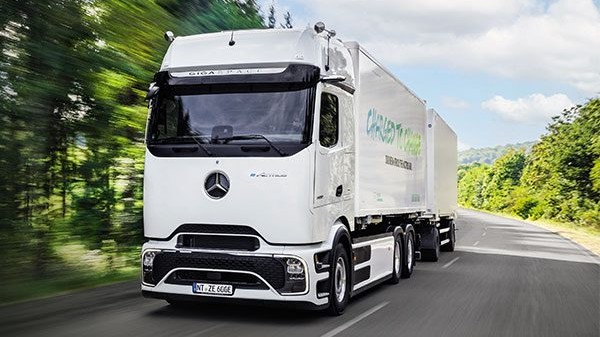
The new Mercedes-Benz eActros 600 longhaul electric truck sure is impressive, but one question needs answering – who will buy it?
I never thought a time would come when a manufacturer would call for operators of diesel-powered trucks to be penalised, but that’s what’s happened.
The comments came from Andreas Gorbach, member of the board of management of Daimler Truck, head of truck technology, who was speaking in Berlin in September when a Mercedes-Benz GenH2 prototype fuel-cell truck completed a 1047km journey on one fill of liquid hydrogen.
“This could be done by either increasing the cost of the fuel, or the tolls for diesel trucks,” he says. “I think it is inevitable in order to make battery-electric and fuel cell trucks more attractive for our customers.”
It’s quite a bold and, dare I say, ‘risky’ thing to say. After all, do you really want to piss off the 99% of customers who still buy your diesel trucks?
While I don’t agree with his comments, I know exactly why he made them.
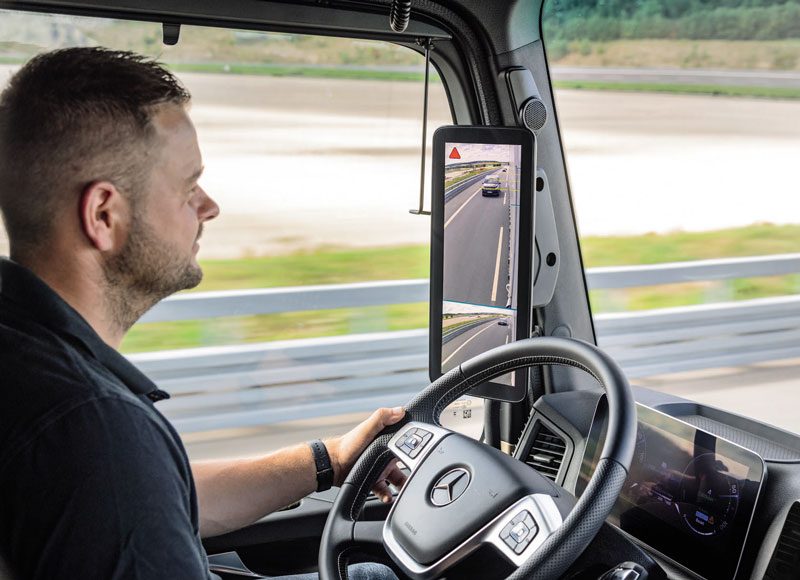

The European Commission has set strict CO2 targets for truck manufacturers, starting with a 45% reduction by 2030 (compared with 2019 levels), ramping up to 65% by 2035 and 90% by 2040. And if they don’t meet them, they get hit with eye-wateringly large fines. So Mercedes-Benz needs its customers to switch from diesel to battery electric. However, unlike the purchase of an electric car, which is largely an emotional decision, buying an electric truck must make financial sense. And therein lies the problem.
While Mercedes-Benz won’t comment on prices, sources suggest that if the GenH2 fuel-cell truck were to be put into production today, it would cost roughly seven times more than an equivalent diesel truck. It’s no surprise then that production won’t commence until the end of the decade.
So that leads me to the second of the manufacturer’s two-pronged approach to decarbonising – battery-electric. Mercedes-Benz has already electrified its lower weights, and in some instances, the eEconic refuse truck and smaller Fuso eCanter make financial sense. In fact, some European operators will make eActros 300 and 400 rigids pay, too.
However, the big volumes are in longhaul, and it’s this market that Mercedes-Benz (and its rivals) needs to tap into to reach those strict CO2 targets. In October, it launched its long-awaited and much anticipated eActros 600 longhaul electric truck, with a more than 500km range. It’s on sale in Europe now, with full-series production planned for late 2024.
Despite costing roughly two-and-a-half times more than an equivalent diesel truck, the company says that in some circumstances, it will achieve cost parity with diesel after five years and 600,000km of ownership. But as far as I can tell, the stars all must be aligned for this to happen. As of early December, Germany’s HGV road tolling system will charge Euro-6 trucks €0.35/km (62c/ km), with passage for electric trucks remaining free until the end of 2025. While this will undoubtedly help sales in its domestic market, it isn’t a silver bullet, and certainly won’t help in Britain and the many other countries whose truck fleets don’t spend a considerable amount of time on Germany’s roads. For them, the only thing that will make electric truck pricing more palatable is if diesel trucks become more expensive to buy and operate… hence Gorbach’s comments.
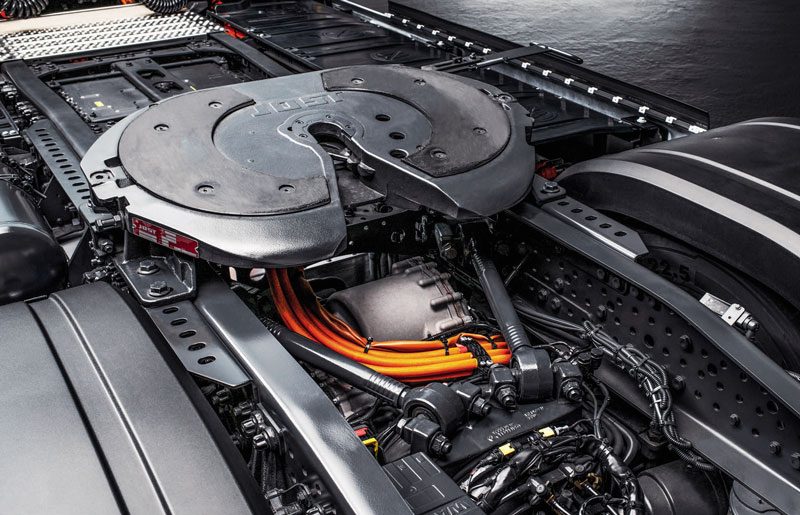
First acquaintance with the eActros 600
While at the eActros 600’s launch, I was offered a chance to ride in the truck. I was initially hoping to drive, but it was not to be. “This truck is our brand-new baby, and we love it very much. And you wouldn’t hand a new baby to anyone,” says my demo driver.
If this were a brand-new diesel-powered truck, I would be bitterly disappointed at being relegated to the passenger seat, but being battery-powered, we aren’t too concerned. Battery-electric trucks are, to be perfectly honest, relatively devoid of character, and it’s getting increasingly difficult to think of new things to say about them. After all, there are only so many ways to phrase ‘it’s very quiet’. So, I agree to a 30-minute ride.
But before I climb in, I look around the truck’s exterior. “We have given the cab a sensual automotive treatment,” says Guney Kol, manager of advanced design at Mercedes-Benz Trucks, when describing the truck’s external appearance. “It has a planted and grounded stance that gives it a calm and confident appearance.” He’s very proud of the slippery new ProCabin, with its 80mm protrusion, rounded-off bonnet, new bumper, LED headlamps, and revised steps. He explains that it has a 9% drag coefficient improvement over the current diesel-powered Actros, which helps give it a class-leading range.
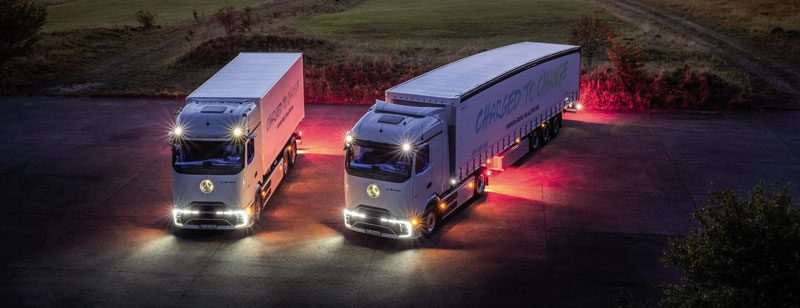
To be honest, I like its looks, which is just as well because rumour has it the ProCabin will appear on Actros L diesel trucks in 2024. However, if the keyboard warriors on social media are anything to go by, Kol and I are in the minority. They’re using words like ‘washing machine’, ‘melted’ and ‘sad face’ in their derogatory comments.
While I’m examining the cab’s exterior, I notice the CCS charger, located in the side skirt on the left of the truck. This, apparently, is a new industry-wide charger location for both left- and right-hand-drive trucks. It’s capable of 400kW charging, which will take it from 20% to 100% in a little over an hour. The 600 can be pre-installed with megawatt charging system (MCS) capability, effectively future-proofing it. A full MCS charge will be achieved in about 30 minutes when the technology becomes available.
Hidden behind the side skirts on the 4×2 tractor’s 4m wheelbase are three lithium iron phosphate (LFP) batteries, each with a capacity of 207kWh. It’s their combined 621kWh capacity that gives the truck its ‘600’ designation.
LFP batteries are known for their long service life, giving Mercedes-Benz the confidence to guarantee their performance for 1,200,000km and 10 years of operation. But a downside to LFP batteries is their weight, with each pack tipping the scales at 1.5 tonnes, the truck is 2.5 tonnes heavier than an equivalent 4×2 diesel-powered Actros.
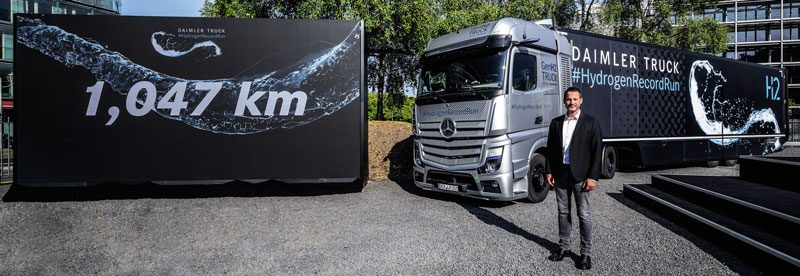
The 600’s real party trick is a new 800V electric axle (e-axle), with twin electric motors and integrated four-speed transmission. The motors, designed in-house specifically for this vehicle, generate a continuous output of 400kW and a peak output of 600kW. The e-axle is oil-cooled, and a series of pipes connect it to the cab’s heating system. Warming the interior in this way will save up to 4kW in freezing conditions. In the same way, the e-axle can also be used to heat the battery, saving a further 10kW. It’s abundantly clear that a vast amount of R&D budget has been channelled into this truck, and nobody could accuse Mercedes-Benz of simply electrifying a diesel truck.
As we leave the Hamburg truckstop where the truck has been launched, the first thing I notice is how loud the turning signals are. They are, of course, the same volume as in a diesel truck, but they’re more noticeable in this tranquil environment.
Earlier in the day, I’d driven an eActros 300, with a distribution cab. That was hushed, but this is stealth-like in comparison. The key reason for the difference is that the longhaul cab has superior sound insulation. It was improved a couple of years ago, and while I didn’t really notice a difference with a diesel engine working away under the cab, I certainly do now. Although we’re travelling in a StreamSpace, which is expected to be the 600’s most popular cab choice, it is also available in BigSpace and GigaSpace guises.
We are in a queue of traffic leaving the truck park, and as we crawl along, I’m reminded of what a pleasant place an electric truck cab is in slow-moving traffic. It inches along smoothly, with calm serenity.
We’re soon on the autobahn, and our driver is keen to demonstrate the truck’s acceleration. We’re running at 36 tonnes, but the instant torque and rapid acceleration make it feel like we’re carrying fresh air. It’s impressive, but treat it like this regularly, and you can kiss goodbye to the 500km range and drive-axle tyres. There is an economy mode, which reduces power by 80%, and you must assume that drivers affected by range anxiety will be eager to engage it.
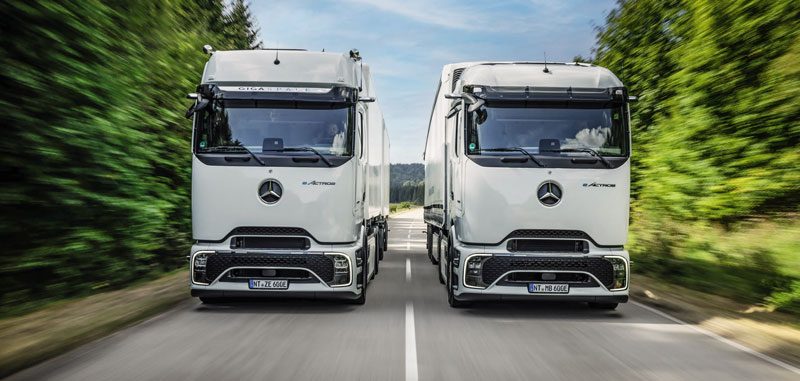
While the 600 accelerates significantly quicker than a top power (620hp) diesel Actros, it’s interesting to note that it doesn’t appear to be vastly quieter while cruising at 90km/h. That’s because, at this speed, wind and tyre noise prevail.
My demo driver works for the R&D department and knows this truck like the back of his hand. As we prepare to leave at the next exit, he first coasts and then seamlessly engages the regenerative braking, bringing it in stage by stage, adjusting the truck’s speed perfectly, and gradually bringing us to a standstill.
We head back to the truckstop on the regional roads, cruising at 60km/h, and whispering our way through towns and villages at 30km/h. Even from the passenger seat, it feels incredibly relaxed, and we fully understand why so many drivers who experience an electric vehicle say they’ll never go back to a combustion engine.
But, ultimately, in the case of a truck, it isn’t the driver’s decision.
Read more
Maximum nostalgia
0 Comments5 Minutes
Meeting Volvo’s VNL
0 Comments13 Minutes
A yank with a Dutch touch
0 Comments8 Minutes
Talking Double Dutch
0 Comments12 Minutes





